 

 

 |


what diamond mining looks like
Northern Sierra Leone is marked by Kimberlite pipes (diamondiferous deposits)
that millennia ago delivered their precious cargo from the earth’s
core toward the surface. The Kimberlite pipes themselves can only be exploited
through modern open pit mining methods while the numerous fissures and
fractures in the earth’s surface are exploited by sifting through
valley bottom gravel by hand. It is along the rivers and in the richest
flattest valley bottoms where traditional rice fields and subsistence
agriculture predominated that diamond mining has taken the greatest toll.
Several local initiatives to restore diamond-mining lands have proven
that the pits, when filled in with mixed soil, can produce reasonable
agricultural plots. Alluvial diamond mining, unlike many kinds of mining,
does not include the use of chemicals or toxic substances.
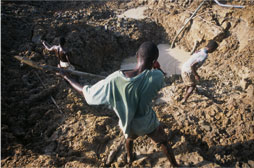 |
Young man shoveling in the alluvial diamond pits in Koidu, Kono
Sierra Leone |
The alluvial diamonds are found by using placer
mining. The simplest technique to extract diamonds from placer ore
is similar to panning. Some mined ore is placed in a sieve and agitated
with water and diamonds picked out by hand. No chemicals are used
in the process. |
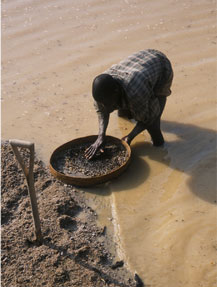
|
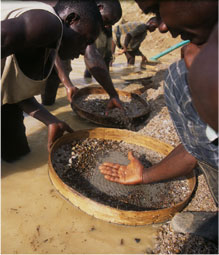 |
Workers hired to mine diamonds receive the equivalent of a plate
of rice a day in payment unless they discover a gem. The license
owner may offer the digger a percentage of the value they give it;
not its traded value. |
No restoration is required of alluvial diamond
sites so the landscape is left cratered. |
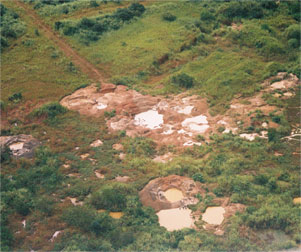
|
|
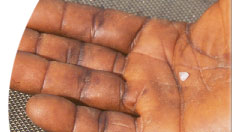
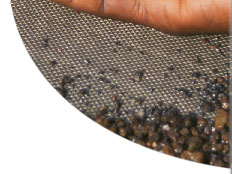 |










